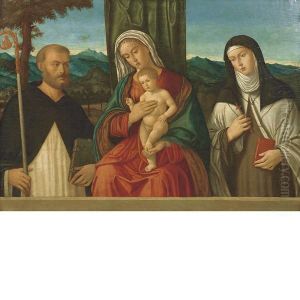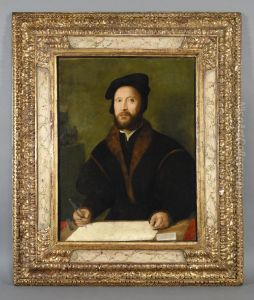Barbari Nicolo De' Paintings
Niccolò de' Barbari, also known as Nicolo Barbari or simply as Niccolò, was an Italian painter and printmaker of the Renaissance period, born around 1440. Not much is known about his early life or training, but he is believed to have been active in Venice and northern Italy. Barbari's work signifies a transition from the late Gothic style predominant in Venice to the more innovative and humanist approach of the Renaissance.
Niccolò de' Barbari's contributions to art are most notable in the realms of engraving and woodcutting, where he demonstrated a high degree of skill and creativity. One of his most famous works is the woodcut map of Venice, created in 1500, which is considered one of the earliest accurate depictions of the city. This map was not only a significant achievement in the field of cartography but also an artistic marvel that showcased the city's architectural and urban splendor.
Another noteworthy aspect of Barbari's oeuvre is his enigmatic and highly detailed prints, which often depicted mythological or allegorical subjects. These works are characterized by their intricate details and the sophisticated use of line, demonstrating Barbari's mastery of the medium and his ability to convey complex themes through visual imagery. His prints were influential in spreading the Renaissance style across Europe, particularly in Germany, where his work was highly admired by contemporaries like Albrecht Dürer.
Despite his considerable contributions to Renaissance art, much of Niccolò de' Barbari's life and work remain shrouded in mystery. Records of his activities are sparse, and only a limited number of his works have survived. Nonetheless, his innovative approach to printmaking and his role in the development of the Venetian Renaissance leave an indelible mark on the history of art. Niccolò de' Barbari died in 1507, leaving behind a legacy that continues to be celebrated for its artistic and technical achievements.

